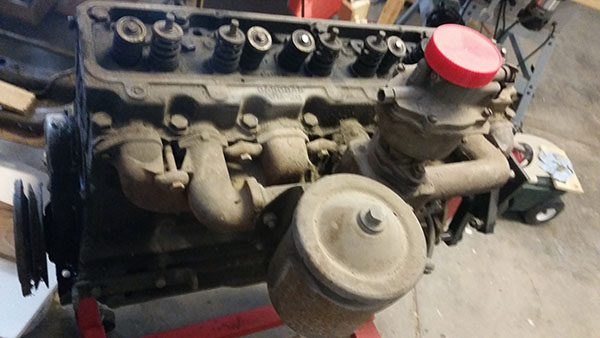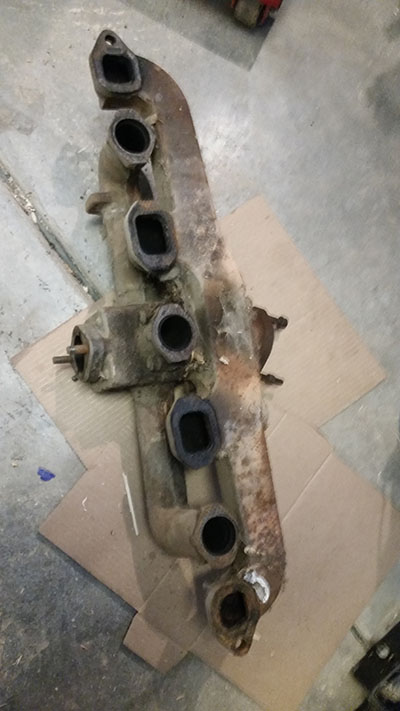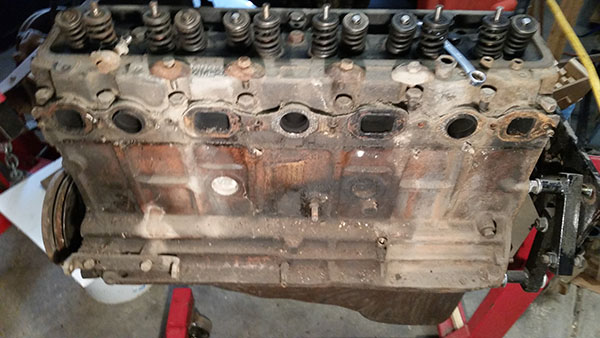
I am a long way from rebuilding the carburetor, but it, the oil filter, and manifolds have to come off the block first.
The first matter was to disconnect and remove the accelerator assembly. This is the business end of the gas pedal, translating the action of your foot into a series of actions controlling the fuel mixture into the engine. You can see that there are various springs, rods, and pivots that had to be disassembled. Those are the images above. Below, the oil filter is shown in place, before removal. In the image beside it, the ports are shown in the block. The oil filter is mounted to the manifold by a pair of U-bolts. It was simplicity to unbolt and remove them, not even worth an image to prove I did it.
The carburetor was unmounted from the manifold body
It was a little more work to get the intake and exhaust manifolds disconnected. There was no way to get the impact wrench into the space between the manifold and the block, so the only option was a combination wrench. Frankly, though nothing has moved since the motor was rebuilt who knows how long ago, the bolts were not a problem.
A few twists with the wrench, and off came the intake and exhaust manifolds as a single unit. I won’t take those apart because a machinist will have to grind the faces smooth in machining.

Being able to turn the manifold around in my hands revealled a couple more casting codes about which I have no idea. I know that the GM number is not for General Motors but for the Saginaw Metal Castings plant, a component maker for Chevrolet.
and here is the driver’s side of the block with the manifolds removed. At this point the gasket has not been removed, but it came off with a tug.

So this leaves the block bare on the driver’s side. The next step takes me right inside the motor.
(By the way, James, she’s terrific. Congratulations.)
















